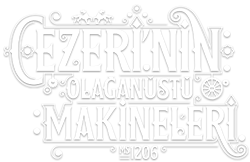Cryptology and mathematical systems
In the ancient times, the universe and nature were thought to be a book that hid itself as much as it revealed itself. Philosophers and scientists looked for the key to this mystery in mathematics. While mankind tried to solve the code of the universe, it learned how to lock and encode itself. Encoding is a science that is as old as the history of mankind, and also one of the most popular interests of leaders who wanted to become victorious in battlegrounds. In Jazari’s mechanisms of hiding and encoding, we see an encoding technique that is far advanced for its own time. On the other hand, his spherical miter shows his interest in mathematics and geometry.
Combination Lock Reconstructed


Jazari also worked on locking mechanisms, and he developed a combination lock. Science historians claim there were no samples of such locking systems in some civilizations before Jazari, counterparts of combination locker boxes are made in Europe much later on, and they survived until our time in pieces or a whole. Modern cryptology made an amazing leap during the World War II with the techniques that were developed for encryption or decryption. Today, this science that uses the computer power is one of the main strategic investment areas for any governments. Of course, the history of cryptology goes far more back. We can see the special combination locker boxes or doors as the first mechanical applications of encryption. However, encryption of messages has started with the invention of writing. Indeed, while the writing is used to share knowledge, it was used to hide instead in ancient civilizations like it was in Egypt. Writing was a privilege for a specific class of people. For the government authorities and other privileged groups, it was vital to keep writing to themselves. During the Artuqid, it was common to use encrypted methods both for encrypting the message and hiding top secret documents. Considering the political climate of the period, we can see the governments were struggling in serious life or death situations, and it depended on strategic dynamic relations. In these relations, it was essential to hide the information. Therefore, it makes sense to think that Jazari’s works on encryption methods wasn’t only due to his intellectual interest, but also to serve some needs of the government. Jazari’s combination locker box was no different than the modern boxes we use for documents or jewelry today. In this system, there are 16 letters around every combination loop. To set the combination, one letter is chosen from every loop, and thus, setting a combination made of 12 letters in total. And it’s possible to choose the same letter for more than one loop, too. To set the mechanism for the combination, inside of the lid, 3 discs below each unit are adjusted in a way that the grooves on their edges face the center. When each unit is locked with a locking disc, loops are moved randomly to leave them in various positions. Thus, a combination lock is formed with a fail chance of 1 in 281 trillion (1612 = 248).
How Does It Work?
Jazari tells us that when he came up with the idea of these locks, he was aware of some older knowledge of such systems before his own time. Still, he also adds that he was the first to create a 4-unit locking mechanism with 3 individual combination loop for each. In this system, there are 16 letters around every combination loop. To set the combination, one letter is chosen from every loop, and thus, setting a combination made of 12 letters in total. And it’s possible to choose the same letter for more than one loop, too.
To set the mechanism for the combination, inside of the lid, 3 discs below each unit are adjusted in a way that the grooves on their edges face the center. When each unit is locked with a locking disc, loops are moved randomly to leave them in various positions. Thus, a combination lock is formed with a fail chance of 1 in 281 trillion. Only when the combination is right, these grooves come together in a way they face the center, so that the locks go off when the handle on the chest turned.
Interactive Combination Mechanism
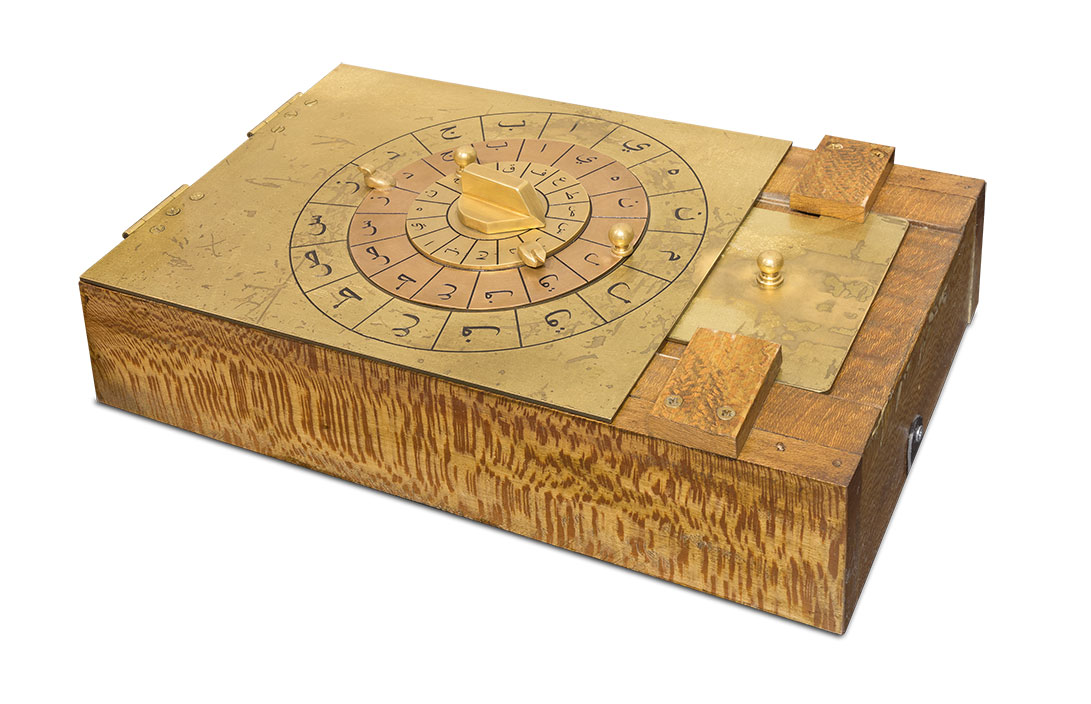
In this system, there are 16 letters around every combination loop that are placed in 3 discs within each other. We can see the similar examples of this system in items like steel safe, briefcases, etc. Each disc is connected to another placed behind it. On each of the inner discs, there is a nick for the locking pin. When the designed combination is entered, these 3 discs are aligned, and the lock goes off. To decrypt this combination set, you have to apply 163 = 212 = 4096 possibilities. Since there are 4 lockers working together, the possibility is 248 = 281 trillion.
Combination Locker Animation
Jazari used the most complicated combination locking system on this Combination Locker Chest. There are 16 letters around every combination loop that are placed in 3 discs within each other. On each of the inner discs, there is a nick for the locking pin. To decrypt this combination set, you have to apply 163 = 212 = 4096 possibilities. Since there are 4 lockers working together, the possibility is 248 = 281 trillion. In the animation you see here, we see a model where a person tries all these possibilities in turn. Considering it takes 15 seconds to try each combination, it would take such a long time over 133 million years to try all of it. Inside the boxes, we see the time spent since he started trying, and the numbers of trials since he began.
Four-Bolt Door Locker
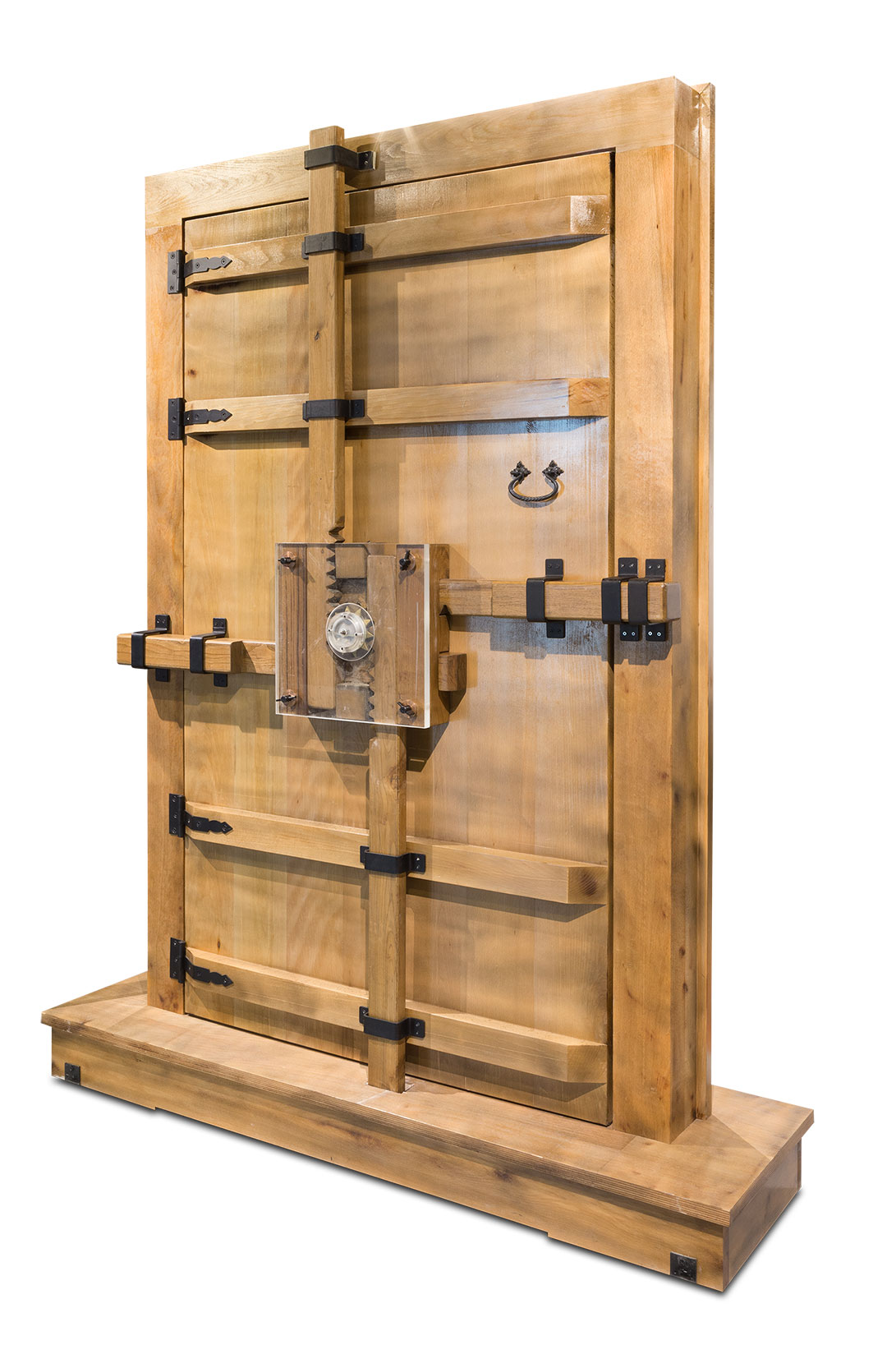
Science historians say that they didn’t see any examples to this bolted locking mechanism before Jazari’s time. This four-bolt door locker is a different form of locking mechanisms used to lock large doors from behind, where it’s used on four sides of a single door. The door is easily locked or unlocked by a single key from front. A gear system opens and locks all four bolts. Also, a separate system used here to prevent the door to be opened from inside. Provided the bolts are made of iron, according to the dimensions given, each of the vertical ones weighs 40 kg. Still, it works smoothly when the key is turned by hand. The image shows the interior of the door.
Combination Locker Historical Scene Image
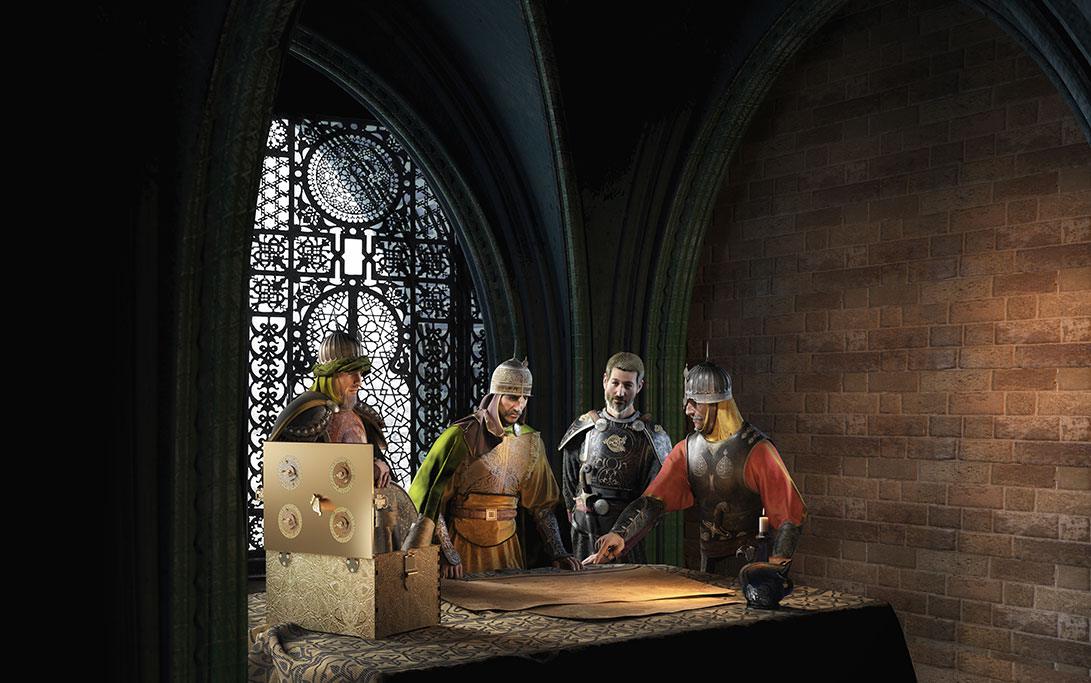
Combination locker boxes were a reliable and popular way to protect information. As seen here in this image, war plans were kept in a combination locker box to be sent from the base to another place.
Cryptology History Poster
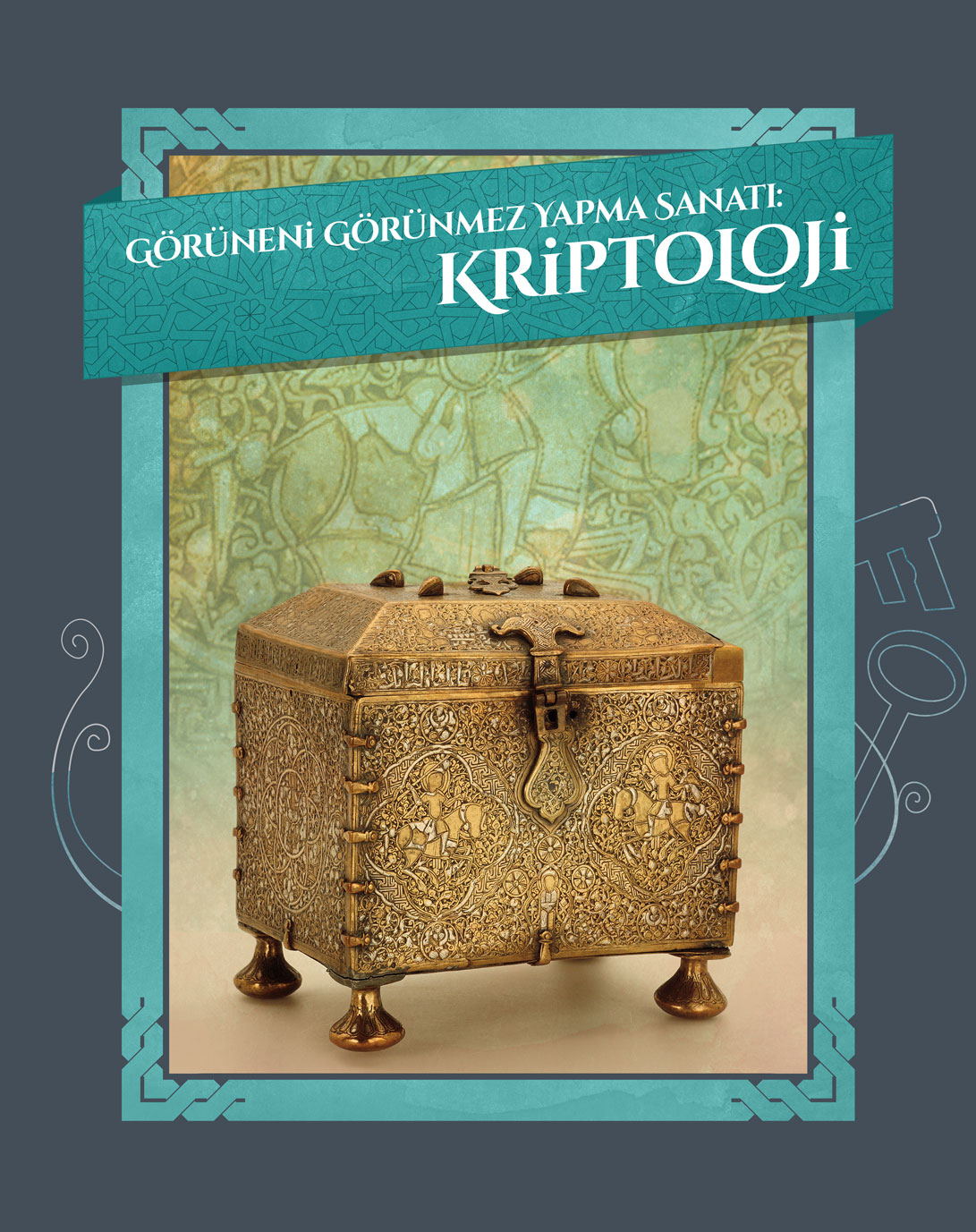
The Art of Making Visible Invisible: Cryptology
Throughout the history, the knowledge was deemed as important no matter what. And when the knowledge had some political, economical, religious, or social power, it became so important that government authorities, religion leaders, artists or artisans searched for ways to protect information. Writing is the oldest model for protecting or hiding information, which eventually led to the creation of cryptology. Invented as cuneiform by Sumerians five millennia ago was thought to be understood by only a specific group of people. When it found its common use, becoming also a vital need, it required new ways to hide the information.
As one of the oldest examples to cryptology, we can show how Caesar changed the positions of letters in a message. After the first simple attempts in ancient times, the theoretical foundation of cryptology was established in Islamic period. Al-Kindī, the first Islam philosopher, explained the frequency analysis technique for the first time in history. This technique that is designed to understand some secret message hidden inside a text was the foundation of cryptology. Ali ibn- Adlan (14th Century) and Ibn al-Durayhim (14th Century) were the pioneers of cryptology in Islamic period. Without a doubt, the most important symbol of cryptology in Islamic world is Jazari’s combination locker box. The locking mechanism that was designed to protect valuable objects or documents was the most advanced encryption system (248 bits) until mid-20th Century. In this system, there are 16 letters around every combination loop that are placed in 3 discs within each other with specifically selected letters of the alphabet.
Vigenère mechanism, which mistakenly became famous with the name of another cryptologist whereas it was invented by Italian expert Bellaso in 16th Century, the “great combination” mechanism that couldn’t be broken for around 300 years since it was developed by French Rassignol family in 17th Century, and cylindrical encryption mechanism designed by Thomas Jefferson in 18th Century were the most famous examples of cryptology in Western world.
Alan Turing Image

The most famous encryption system before the time of modern computers was Enigma encryption machine used by Nazi Germany. While Polish, English, and American cryptologists tried to decipher this system throughout the World War II, they were able to do it only towards the end of the war. Alan Turing, who took part in these efforts, based on his experiences he gained during the process, designed his memory machine named ACE that’s deemed as among the pioneers of modern computers. Despite the efficiency of super computers today, mechanical encryption systems are still in use.
Interactive Door Lock
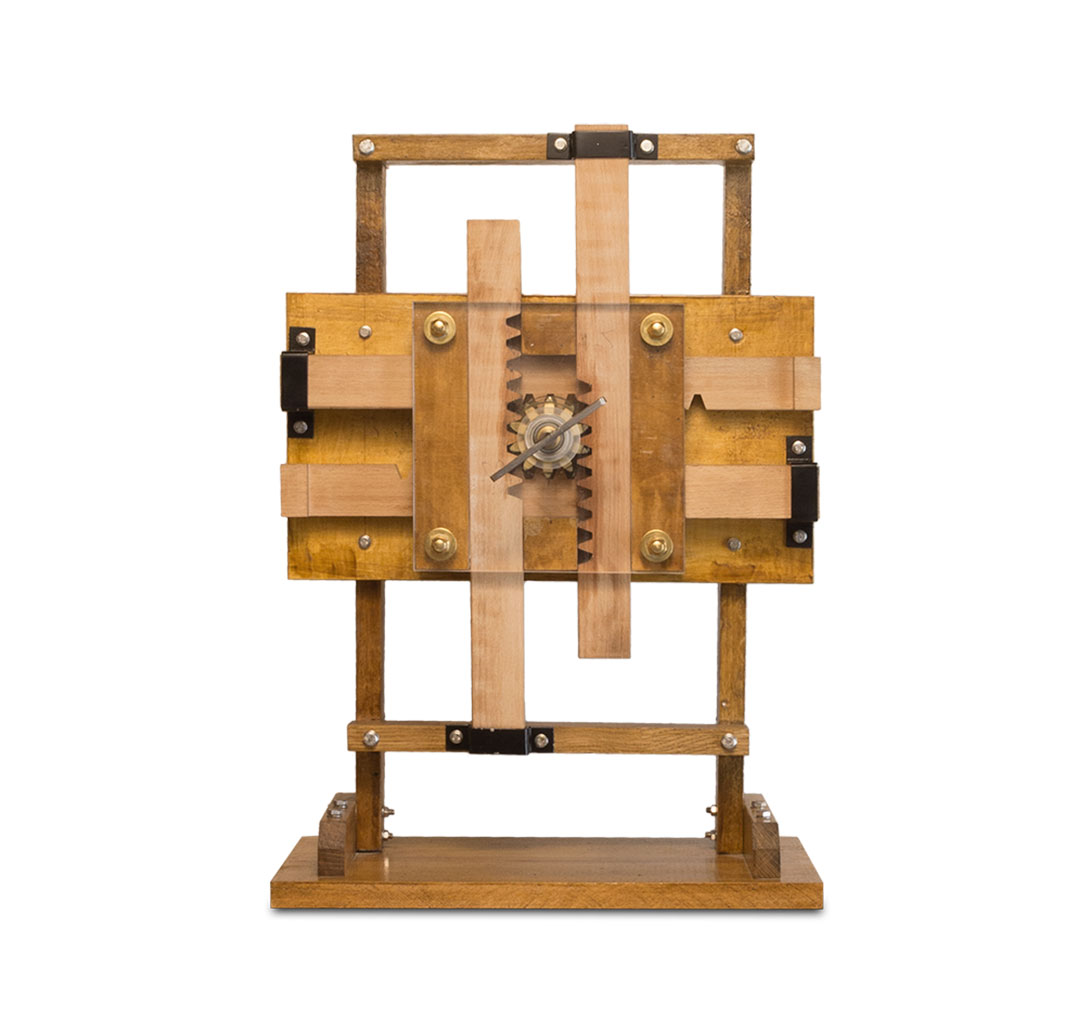
Instead of the wooden beams that were used manually to lock the doors during his time, Jazari developed far more advanced door locking systems that could be locked on four sides. While many doors are locked by a few small bolts even today, his door was immune to any form of force since it had bolts on all sides. This system works with a single gear that is turned by a key. This circular movement is transformed into linear movement by these gears, pushing the bolts into the holes inside the walls, and securing the door in its place.
Mathematic History Poster

The Amazing Language of the Universe: Mathematics
The evolution of sciences have been quite difficult, and took a very long time. On the other hand, there is a discipline that became a science long before others – Mathematics. As a controllable and repeatable science, it evolved from Mesopotamia since five millennia ago when the numbers were written on clay tablets. While we see it in Babylon around 2000 B.C., it moved from Egypt to China, India, Greek, and all the other ancient civilizations that used writing.
Mathematic was introduced to Islamic world in 9th Century through translations, and a brand new mathematical system was formed. This new system that was developed by al-Khwarizm was the beginning of modern algebra. With its use to calculate unknown variables through equations, algebra became the main foundation of mathematic, and it penetrated into all the areas of mathematic and geometry.
The contributions made by Islam scientists are evident especially in their aim to create a bridge between geometry and mathematic. Therefore, scientists like Al-Karaji, who tried to apply mathematic to algebra, trigonometry, and number theories, Ibn al-Haytham, and Sabit ibn Kurra, who produced formulas for perfect numbers, prime numbers, and magic squares, were milestones in Islam civilization. Another name that shouldn’t be skipped is Omar Khayyam. Developing formulas to create a bridge between geometrical and algebraic arguments in 12th Century, he brought all mathematical disciplines together. The mechanisms designed by Jazari show that the three dimensional geometry was highly advanced in 12th Century, and he was highly knowledgeable over the topic.
Geometric Drawing Instrument and Sphere of Experiments
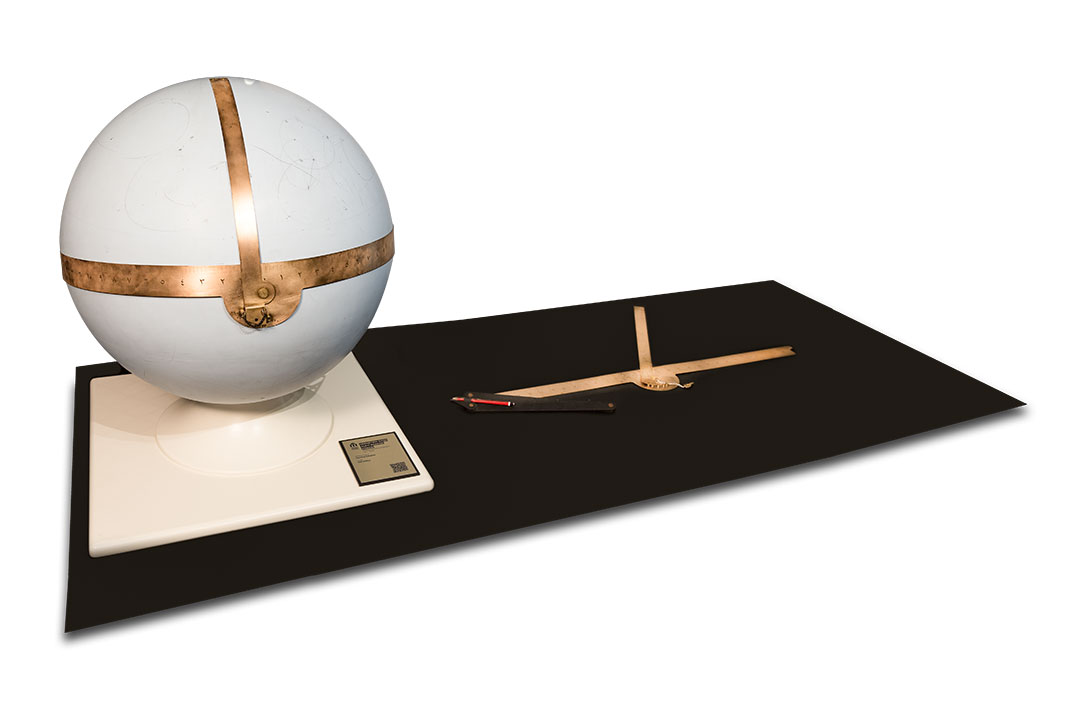
Jazari’s spherical ruler is actually a spherical protractor that can measure all sorts of angels, including right angles. However, this tool was made of an elastic material so that it could bend to measure angles even on a spherical surface. Jazari made this tool so that he could calculate circles that go through three different points on a single surface. On the other hand, since it can divide the circle with 120 and 108 degree angles, it can be used to draw pentagons and hexagons. However, other than the efficiency of this ruler, what strikes us is that it shows how popular the geometry was among the intellectual circles during Jazari’s time. Indeed, when he described this tool in his book, Jazari says some didn’t believe in him when he said three points on a sphere are on the same circle, so he had to prove his argument. Historians emphasize quite often that Artuqid sultans were highly interested in art and science. So, Artuqid court should be seen as an intellectual environment where scientists and artists were respected. As we saw in previous chapters, it was common to have social gatherings where such highly intellectual topics were discussed. Even the term of Ilm-i Hiyal proves this idea. Apparently, they were coming up with ingenious solutions to overcome the limitations that prevented them from creating their dream world. However, for the scientists of that time, Ilm-i Hiyal was the proof of abstract theories in their minds, and it required mastery to built mechanisms to prove it in physical world. In another word, an artist entrapped a theory of some scientist, and created the trick to test that theory. That’s why this ruler is extremely important, because it shows how necessary it was to come up with physical proof for imaginary theories.
How Does It Work?
Made of an elastic material, this ruler can be bent over spherical surfaces to measure the angles. Jazari wanted to prove his friends that a circle goes through any 3 given points on a spherical surface, so he developed this ruler to do it. It also can help to find the exact middle point of a line. With its moving part, the ruler can measure 90, 60, 72, 108, and 120 degree angles. While these angles are important to draw perpendiculars, they were deliberately chosen so that this ruler could help to draw pentagons and hexagons. Jazari developed a pin to fix the ruler at a specific angle.
